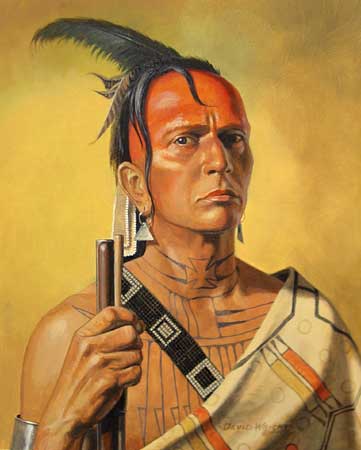Chapter 2 - 2.3.4
Chapter 2: The Indian reservation today
2.3.4. Gambling
Today, there are many casinos in the Indian reservations not only to attract tourists but also to draw in revenue (Indian Reservation Casinos 2003). It is known that the business of the casinos combined with the tourism is the best aspect of American Indian economy (American Indians today/Economies and source of income 2010). On October 17, 1988 a special governmental law called the Indian Gaming Regulatory Act (IGRA) was established by the United States Congress to allow Native Americans run casinos in the reservations (Indian Gaming Regulatory Act, National Indian Gaming Commission Home Page). This act is intended to promote tribal economic development, self-sufficiency and tribal government. It also protects Indian gaming from organized crime and prevents abuses by providing for a regulatory base. The next aim of IGRA was establishment the National Indian Gaming Commission (Native Americans are Cashing-In With Gambling Casinos on the Reservation 1996) which conducts regular inspections and checks the observance to the official Gaming Regulations in the casinos (American Indians Today/Economy and source of income 2010). The act from 1988 describes three classes of gambling and gaming. The first class defines that social games for prizes of minimal value or traditional forms of Indian gaming engages in by individuals as part of tribal ceremonies. All forms of bingo, games such as pull tobs, lotto and card games are clearly authorized by state law. What is important, blackjack and baccarat are not included. This is described in the second class. Finally, in the third class are games which are not included in Class I gaming or Class II gaming (Native Americans are Cashing-In With Gambling Casinos on the Reservation 1996). During the first year produced about $100 million in revenues with only a few tribes operating gambling establishment (Indian Gambling on Reservations - Seventeen years later 2011). Today on the territory of the all reservations there are about 400 casinos and bingo centers (American Indians Today/Economy and source of income 2010) which bring in $19 billion dollars a year (Indian Reservations and the American Casino Culture 2009). Some tribes often offer additional amenities such as resort hotels, shopping malls and golf courses. This is great revenue source for the tribes. What is more, it broadens employment opportunities not only for tribal members but also for non-tribal ones. As a result of Indian gambling the housing for elders and other tribal members, schools, colleges and community centers are building. There are many institutions which are concerned with alcohol and drug treatment and financing new business enterprises (Native Americans are Cashing-In With Gambling Casinos on the Reservation 1996). Additional the health service is not founded by the Federal Government any more (Indian Gambling on Reservations - Seventeen years later 2011). Gambling does not bring only positive aspects. It brings many negative ones such as addiction to gambling (Native Americans are Cashing-In With Gambling Casinos on the Reservation 1996). We will be talking about it in chapter 3.
